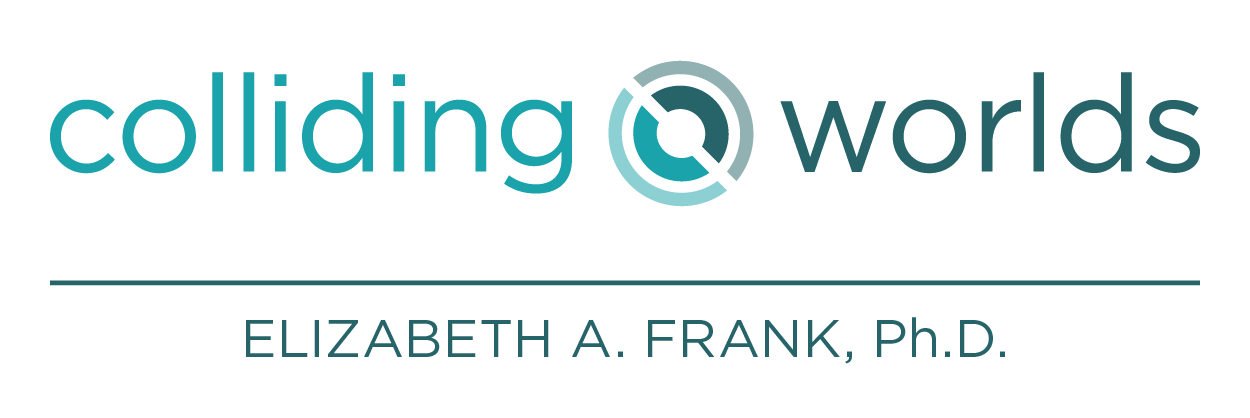Before applying to an industry job, do these 3 things
If your whole career thus far has been in academia and you’re looking to make the leap to industry, you might be tempted to head to monster.com and start firing off your CV. That’s the job search equivalent of throwing moldy spaghetti (your CV) at a brightly wallpapered wall (job search engines) and seeing what sticks (nothing). DO NOT DO THIS.
Instead, be strategic! You should already have an idea of which sectors and jobs you’d like to target. (If not, check out my post on how to figure that out.) But if you start applying without first doing these three actions, your application will just be flushed down the digital toilet.
Don’t worry, my advice is better than my metaphors.
1. Network.
I don’t think it’s possible to overemphasize the importance of networking. It’s not something we’re explicitly taught how to do in grad school, but you’ve done it without realizing it, such with a presenter at a poster session or colleagues before the weekly colloquium. You never know how a positive connection with someone will benefit you in the future.
Personal experience: As a grad student attending a workshop, I met a senior scientist who became a mentor and friend. Several years later, he provided me an introduction to Planetary Resources’ CEO, resulting in my resume immediately floating to the top of the digital stack. Two months later, I had a job offer.
Personal experience: I have my current job thanks to my network as well. Former coworkers at Planetary Resources invited me to join their start-up, thanks to the strength of our previous working relationships.
Having an extensive network is also invaluable for when you’re drafting a cover letter for a job application. It is critical to have a person at that company whose name you can drop on the cover letter. Not only does that provide an internal recommendation for you, but your contact can also sniff around for inside knowledge about your application status.
I couldn’t think of a relevant image for this post, so instead you’re getting a picture I took on a hike the other week in the central Cascades. Sorry not sorry.
2. Ditch the CV and create a resume.
A resume is not a CV: it should be 1-2 pages, not 15. There are a million resources (and conflicting opinions) on how to write a resume, but I want to highlight some subtleties typically lost on academics.
Make sure your resume includes:
The results of your work rather than the topics. Example: “Led an interdisciplinary group of researchers to solve [a scientific problem]” or “Earned $500,000 in NASA funding through proposals” is going to be more interesting to employers than “Studied [science]”.
Your transferable skills. Consider which tools, software, instrumentation, processes, etc. that you’ve used in your research: that knowledge could be of value to a potential employer.
Keywords from the job solicitation. Don’t make the recruiter or hiring manager figure out how you could fulfill the duties of the role. Customize your resume to include words and phrases from the solicitation (but don’t lie, duh).
Your resume should not include:
Every publication and conference presentation. Real talk: no one will care about your publication history. You aren’t being judged by your h-index but rather by what value you can bring to the company—hence the emphasis on skills.
Your birthday, spouse, number of children, city of birth. I’ve seen this in older scientists’ CVs, and it baffles me. Haven’t they heard of identity theft?
An objective. That’s an outdated style no longer in use. Rather, start your resume with 3 or 5 bullet points summarizing yourself.
References or the phrase “references available upon request.” If after your interview a company wants to talk to your references, they’ll ask then.
Again, this is a non-exhaustive description, so do some googling and look at resume samples to get a feel for what content is required.
3. Make a LinkedIn profile.
This is non-negotiable! Your LinkedIn profile is your online resume, so start by using content from your resume. The picture should be a professional headshot, not an Instagram photo from your Paris vacation.
Personal experience: Headshots don’t have to be expensive. Visit your closest dying indoor mall and get one taken for cheap at JC Penney. I found a coupon and paid $20 for 3 pictures.
Send invitations to connect with people you know on LinkedIn, and use it to get back in touch with friends/colleagues you haven't talked to recently. Having >500 connections shows recruiters and potential employers that you have a solid network and you're worth knowing. LinkedIn is also great for reaching out to people outside your network and forging new connections and opportunities.
Each of these actions is tractable and critical to success in finding an industry job, yet I’ve only scratched the surface. I’ll dive into more detail on each them in future posts.
Further reading:
Networking for Nerds (Alaina Levine)
Differences Between CVs and Resumes (Key Differences)
The Most Effective Ways to Use LinkedIn (The Balance Careers)


